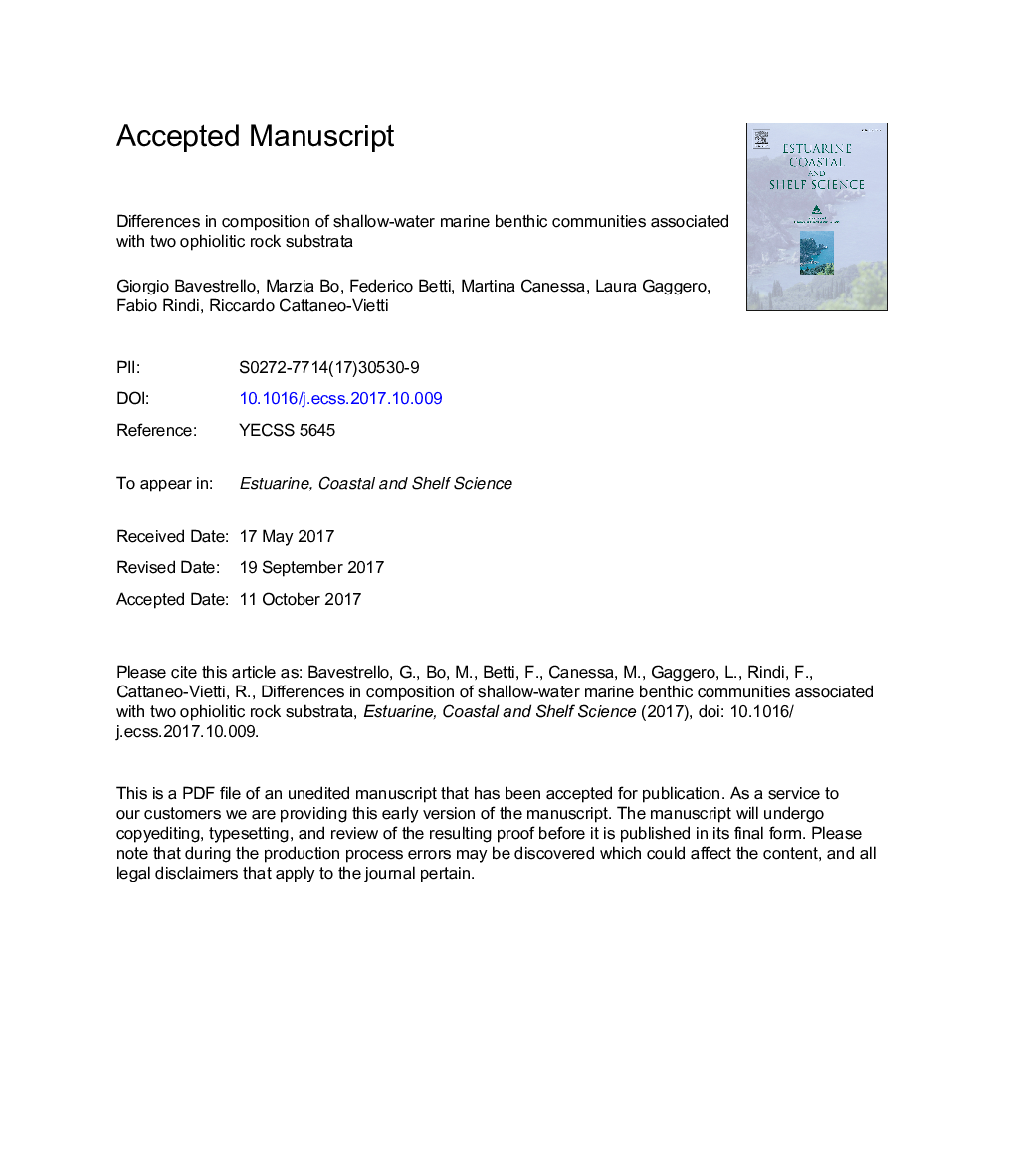| Article ID | Journal | Published Year | Pages | File Type |
|---|---|---|---|---|
| 8885073 | Estuarine, Coastal and Shelf Science | 2018 | 28 Pages |
Abstract
On marine rocky shores, several physical, chemical and biological processes operate to maintain the benthic assemblages' heterogeneity, but among the abiotic factors, the composition and texture of the rocky substrata have been only sporadically considered. However, biomineralogical studies have demonstrated an unsuspected ability of the benthic organisms to interact at different levels with rocky substrata. Therefore, the mineralogy of the substratum can affect the structure of benthic communities. To evaluate this hypothesis, the macrobenthic assemblages developed on two different ophiolitic rocks (serpentinites and metagabbros) in contact at a restricted stretch of the western Ligurian Riviera (western Mediterranean Sea), with identical environmental and climatic conditions, were analysed. Samplings were carried out at four bathymetric levels (+1m, 0m, -1m, and -3m respect to the mean sea level) and the analysis of the data evidenced differences in terms of species distribution and percent coverage. Algal communities growing on metagabbros were poorer in species richness and showed a much simpler structure when compared to the assemblages occurring on the serpentinites. The most widely distributed animal organism, the barnacle Chthamalus stellatus, was dominant on serpentinites, and virtually absent on metagabbros. Our results suggest a complex pattern of interactions between lithology and benthic organisms operating through processes of inhibition/facilitation related to the mineral properties of the substratum.
Keywords
Related Topics
Physical Sciences and Engineering
Earth and Planetary Sciences
Geology
Authors
Giorgio Bavestrello, Marzia Bo, Federico Betti, Martina Canessa, Laura Gaggero, Fabio Rindi, Riccardo Cattaneo-Vietti,
